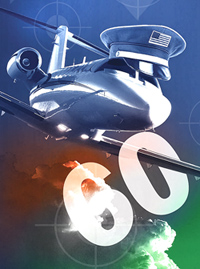INDIAN ARMED FORCES CHIEFS ON OUR RELENTLESS AND FOCUSED PUBLISHING EFFORTS

The insightful articles, inspiring narrations and analytical perspectives presented by the Editorial Team, establish an alluring connect with the reader. My compliments and best wishes to SP Guide Publications.

"Over the past 60 years, the growth of SP Guide Publications has mirrored the rising stature of Indian Navy. Its well-researched and informative magazines on Defence and Aerospace sector have served to shape an educated opinion of our military personnel, policy makers and the public alike. I wish SP's Publication team continued success, fair winds and following seas in all future endeavour!"

Since, its inception in 1964, SP Guide Publications has consistently demonstrated commitment to high-quality journalism in the aerospace and defence sectors, earning a well-deserved reputation as Asia's largest media house in this domain. I wish SP Guide Publications continued success in its pursuit of excellence.
- A leap in Indian aviation: Prime Minister Modi inaugurates Safran's Global MRO Hub in Hyderabad, Calls It a Milestone
- All about HAMMER Smart Precision Guided Weapon in India — “BEL-Safran Collaboration”
- India, Germany deepen defence ties as High Defence Committee charts ambitious plan
- True strategic autonomy will come only when our code is as indigenous as our hardware: Rajnath Singh
- EXCLUSIVE: Manish Kumar Jha speaks with Air Marshal Ashutosh Dixit, Chief of Integrated Defence Staff (CISC) at Headquarters, Integrated Defence Staff (IDS)
- Experts Speak: G20 Summit: A Sign of Global Fracture
New US pilot law clouds Indian skies

NEWS
A new US federal law passed mid-December 2007 may make it difficult for airline companies in India to recruit retired expatriate pilots to meet perennial shortages. The Fair Treatment for Experienced Pilots Act allows both the pilot and the co-pilot on a domestic flight to be up to the age of 65 years. The law also allows one pilot on international flights to be up to the age of 65 years provided the other is 60 years or below. The earlier cut-off age of 60 years allowed Indian carriers to hire US pilots since in India, commercial pilots can fly till the age of 65 years.
VIEWS
A true bull run in the Indian civil aviation industry and the accompanying exponential increase in the number of aircraft has triggered a spurt in demand for airline and general aviation pilots. Given the dismal condition of the present lot of mostly state-owned flying clubs, it would be impossible to meet the demand from internal sources. Little wonder then that the galaxy of airlines which have mushroomed in the last five years, besides the older operators, have to acquire pilots from foreign sources. Today, out of the 2,500 active civil pilots in India, over 800 are foreign nationals.
Among the foreign pilots, 5 per cent are from the US, all averaging above 60 years of age. An overall strength of 40 US pilots may not seem startling, but the figure is all set to grow at a much faster pace, egged on by the heightened demand for experienced commanders to manoeuvre the expanding fleets of all the airlines. Yet another driver is the growing perception of the US being a major source of supply.
Struggling to cope with acute shortage of pilots to command new-generation airliners like the Boeing 777s and the widebodied Airbus 330s that ply on their international routes, for airlines in India the new regulation could not have been timed worse. According to a report prepared by the Ministry of Civil Aviation last year, the number of civil registered aircraft has doubled to more than 300 in the last plan period and is likely double again to 600-plus by the end of the current 11th (2007-11) plan period. At an industry level requirement of nine pilots per aircraft, India’s need would by then rise to more than 5,400 pilots. About 50 per cent of these would have to be experienced commanders.





